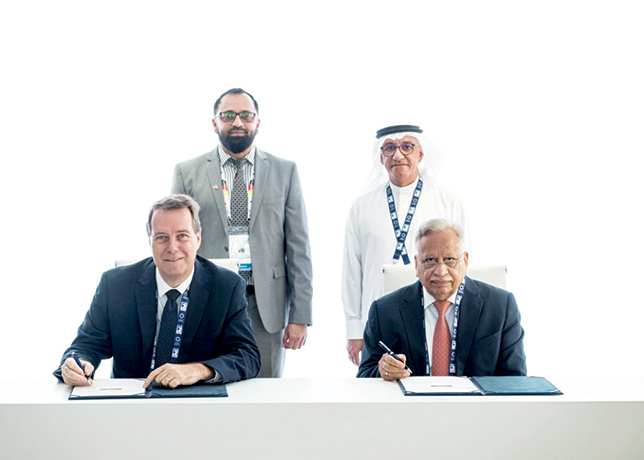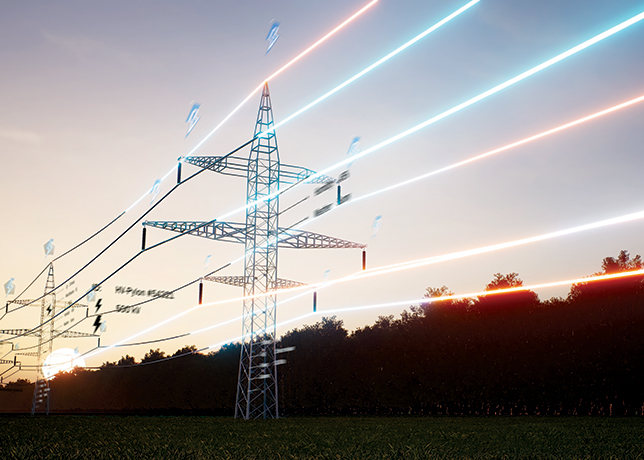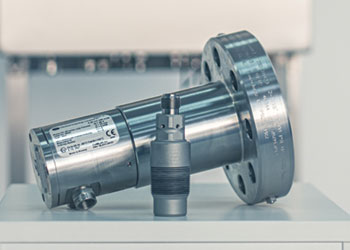
 Since the launch of SGI, 43.9 million trees have been planted
Since the launch of SGI, 43.9 million trees have been planted
Saudi Arabia can become an energy transition leader by developing investments, research programmes, training and education, and incentives that help accelerate the move to electrification, energy efficiency and hydrogen use
Saudi Arabia was named the fastest growing G20 economy in 2022 by the International Monetary Fund (IMF) in September last year, growing at 8.7 per cent, but it was also the 16th largest emitter of greenhouse gases (GHG) with a 1.5 per cent share of the global total.
The Kingdom has since 2021 moved at speed to reduce its climate impact to reach its net-zero goal by 2060, making significant progress under the Saudi Green Initiative (SGI) launched by His Royal Highness Mohammad bin Salman, the Crown Prince, Prime Minister, and Chairman of the Higher Committee for the initiative.
From 1990-2022, the counry's emissions grew at a compound annual growth rate of 3.9 per cent, one of the highest in the world.
On a per capita basis, every Saudi produces 20.5 tonnes of carbon dioxide equivalent (tCO2e), ranking the Kingdom 13th out of 191 in the world, according to the Emission Index.
The energy industry was the highest emitting sector in 2019, having produced 582 million tonnes of GHG emissions, which amounted to 80.5 per cent of the country total.
This was followed by industrial processes and waste in second and third place, producing 14.6 per cent and 4 per cent of total GHGs, respectively.
The country has long been a dominant player in the oil market, and in recent years has undergone a significant energy transition, recognising the need to shift towards renewable energy and reduce its carbon footprint.
This is visible from the country's Effective Energy Transition (ETI) score kept by the World Economic Forum (WEF).
The ETI benchmarks countries on their current energy system performance and provides a forward-looking measure of transition readiness.
Over the past 10 years, Saudi Arabia has shown an 11 per cent improvement in its overall ETI score, the WEF’s ‘Fostering Effective Energy Transition 2023’ report said.
Its current score of 55.3 ranks it 57th out of 120 countries, and the leader in the Middle East, North Africa and Pakistan region.
Although its sustainable ranking is making progress, there is still room for improvement, particularly in reducing energy and carbon intensity.
KEY IMPERATIVES & POLICIES
The King Abdullah Petroleum Studies and Research Center maintains that "non-oil exports are an important component of Saudi Arabia’s economic diversification, as they can play crucial roles in sustainable economic development and job creation".
According to one analysis, "hydrogen production would allow Saudi Arabia to become less reliant on domestic oil as a key source of income" and would use its existing oil and gas infrastructure and supply chain networks.
Saudi Arabia’s National Hydrogen Strategy, targeting 4 million tonnes per year of clean hydrogen, aims to make the country a leader in its production and export.
The Public Investment Fund (PIF) has invested in several hydrogen-related projects, including a joint venture with Air Products to build $5 billion green hydrogen plant in the country.
In October 2022, PIF also successfully auctioned 1.4 million tons of carbon credits, making it the first voluntary carbon market in the region.
In December 2023, at the SGI Forum held in conjunction with COP28 in Dubai, Saudi officials focused on the steadfast progress towards the Kingdom’s aim to reach net-zero by 2060, highlighting the nation’s contribution to global climate goals through the implementation of over 80 public and private sector initiatives representing an investment of over $88 billion, for a greener future for all.
A statement by SGI said Saudi Arabia is on track to achieve its goal to reduce carbon emissions by 278 million tonnes per annum (mtpa) by 2030.
The Kingdom aims to achieve an optimal energy mix for electricity production by having gas and renewable energy at approximately 50 per cent each by 2030. When achieved, t his will displace approximately 1 million barrels of liquid fuel currently used.
Since 2022, an additional 2,100 MW of renewable energy has been connected to the grid, bringing the total capacity of installed renewable energy to 2,800 MW (2.8 GW), generating energy equivalent to powering over 520,000 homes.
This marks a 300 per cent increase in installed capacity, demonstrating the pace at which Saudi Arabia is accelerating its energy transition.
By 2023-end, the production capacity of renewable energy projects under construction in Saudi Arabia was expected to exceed 8 GW, with an additional 13 GW of renewable energy capacity in various stages of development across multiple projects.
Saudi Arabia’s efforts to transform its domestic power mix also involves several projects to reduce reliance on liquid fuel and replace it with gas to produce energy.
As of December 2023, four high-efficiency gas-fired power plants with a total capacity of approximately 5,600 MW started operation.
Additionally, in October 2023, the Saudi Power Procurement Company (SPPC) announced the winning bidders for four combined cycle gas turbine (CCGT) power plants totalling 7.2 GW in capacity, with provision for carbon capture and sequestration (CCS) readiness.
At 2021-end, gas-fired generation represented 46 per cent of Saudi Arabia’s installed capacity with 41 GW and 57 per cent of its power generation with 228 TWh.
The Kingdom is also building highly efficient plants equipped with carbon capture and storage technologies, with a total capacity of approximately 8.4 GW.
As part of its ongoing investment into future-proof fuels, Saudi Arabia is progressing development on the $8.4 billion green hydrogen plant in Neom, which is set to be the world’s largest.
Several bilateral agreements were signed with international counterparts throughout 2023, with the aim of producing and exporting clean and green hydrogen.
Separately, since the launch of SGI, 43.9 million trees and shrubs have been planted and 94,000 hectares of degraded land – equivalent to over 146,000 football fields – have been rehabilitated across the Kingdom, contributing to the target to grow 10 billion trees in Saudi Arabia over the coming decades.
Over 40 initiatives are already underway, directly supporting progress towards the interim target of planting over 600 million trees and rehabilitating 8 million hectares of land by 2030.
In conclusion, Saudi Arabia can become an even stronger leader of the energy transition in the region by developing joint investments, research programmes, training and education, as well as incentives that help accelerate the move to electrification, energy efficiency and use of hydrogen.
By Abdulaziz Khattak

















































































